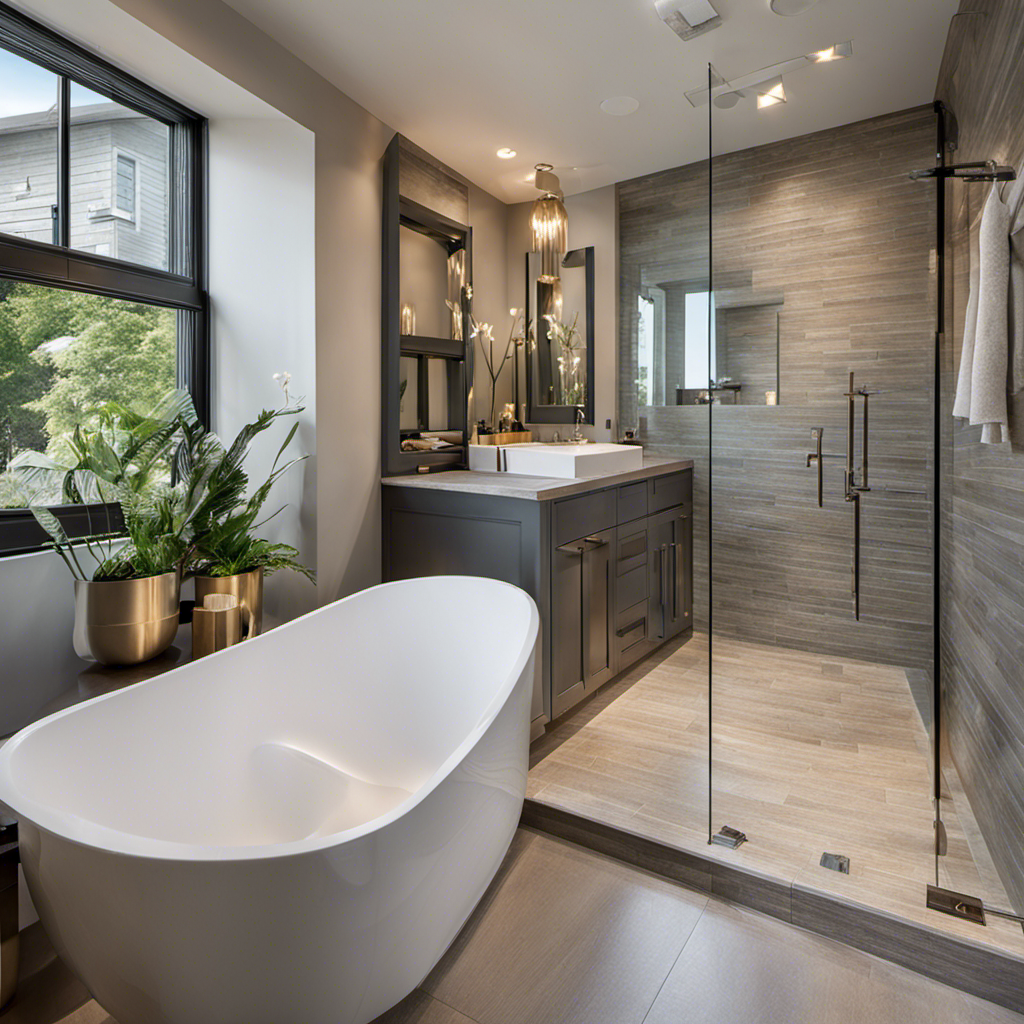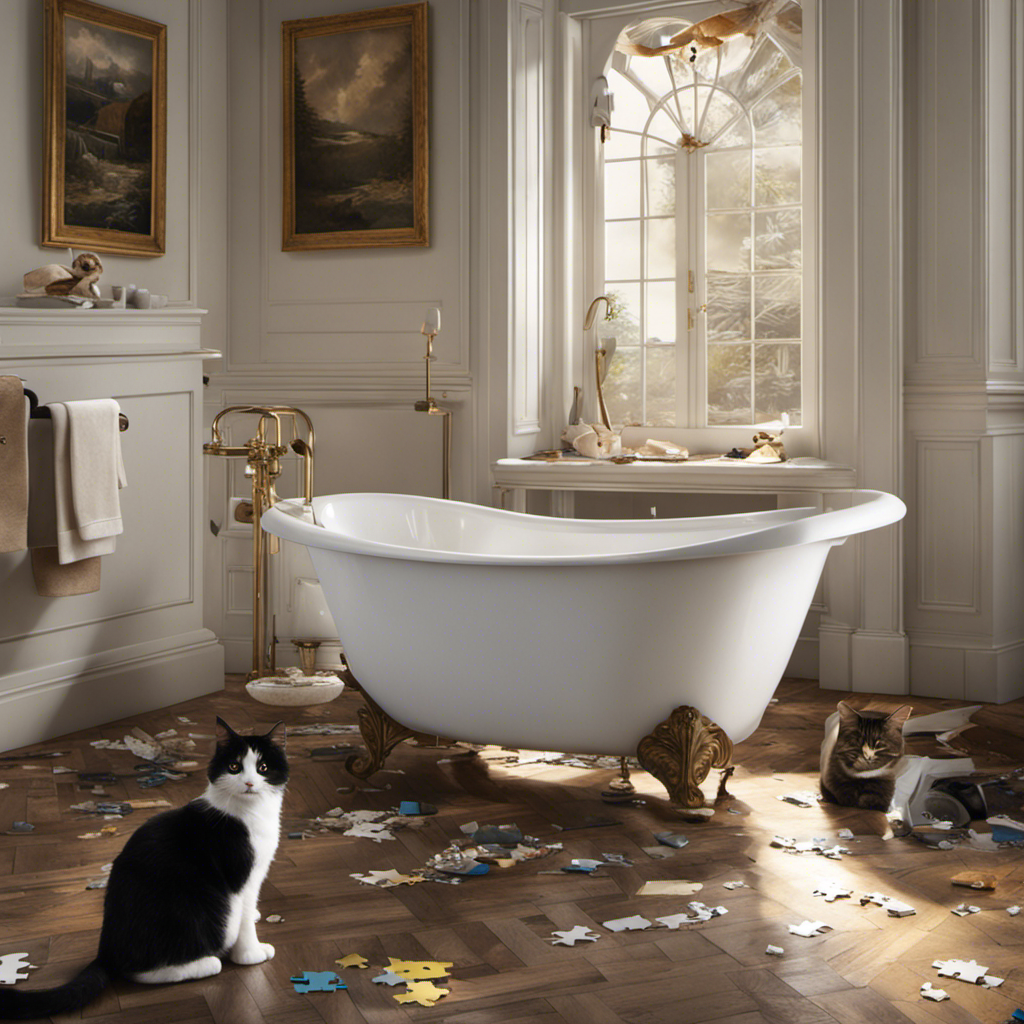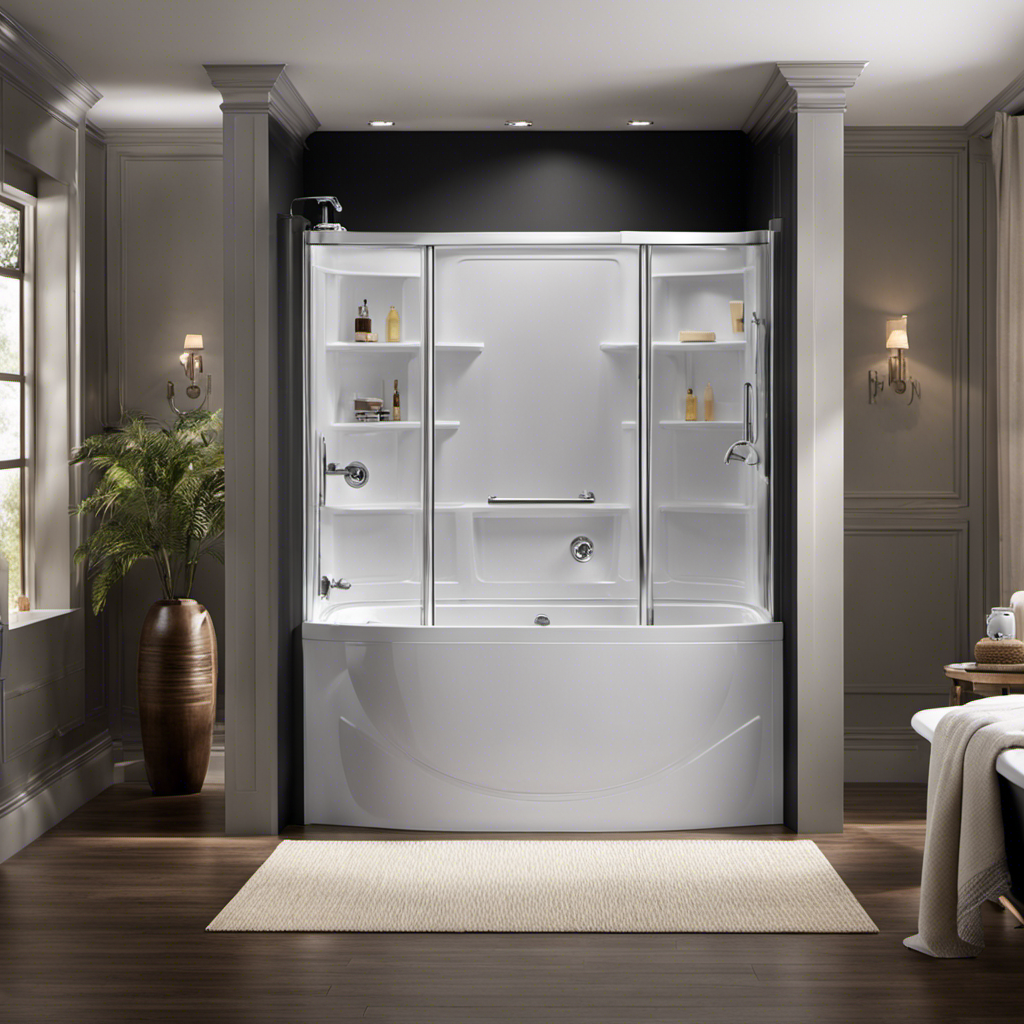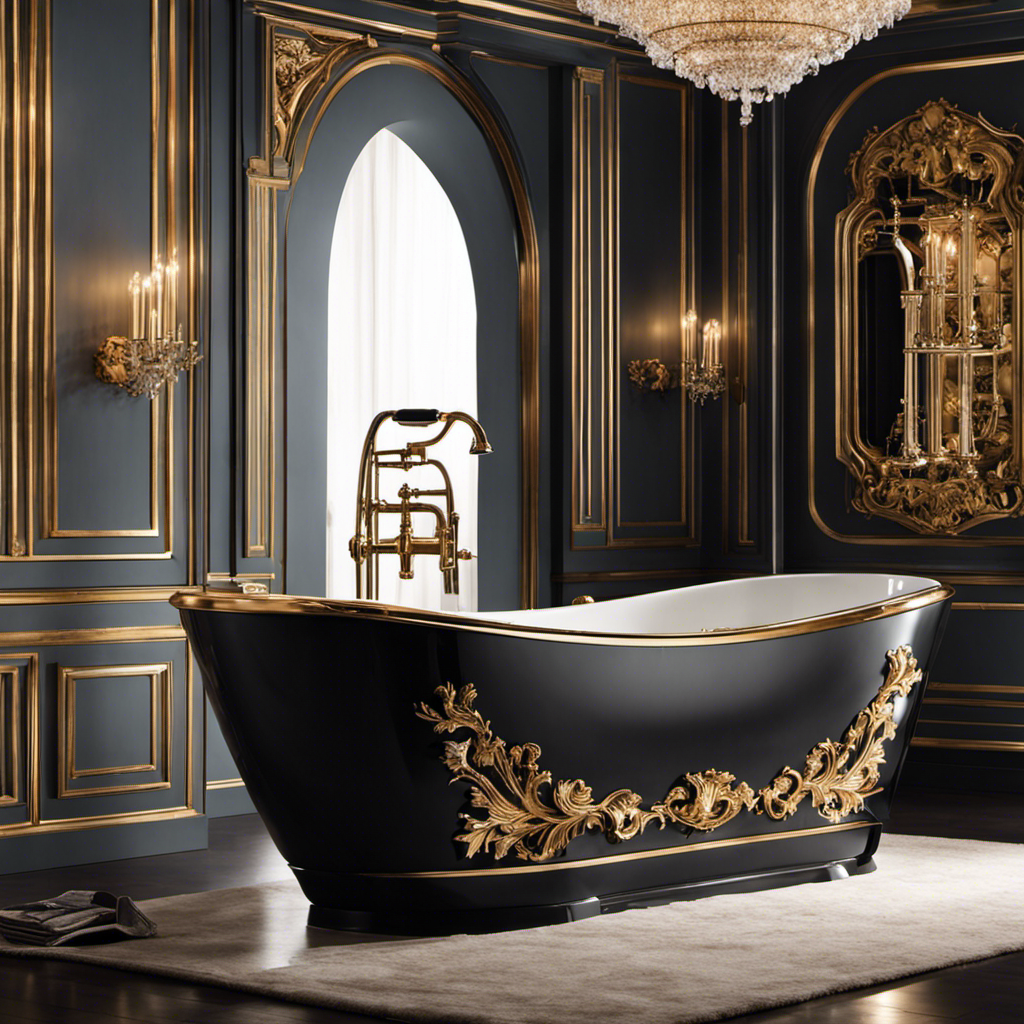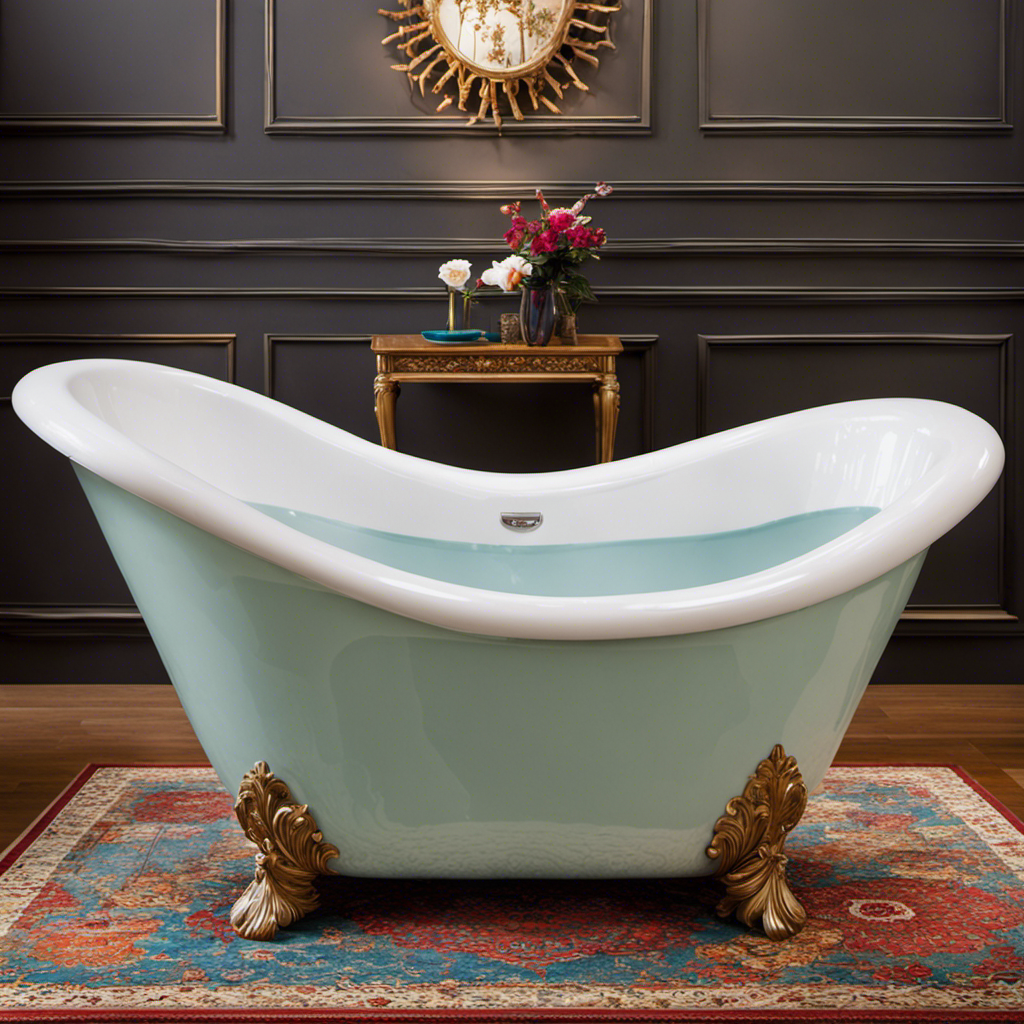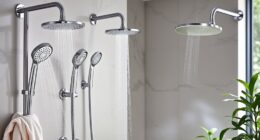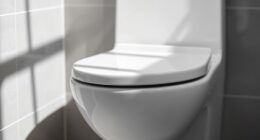Did you know that over 80% of homeowners prefer showers over bathtubs? If you’re one of them, it’s time to make the switch and transform your bathroom into a more functional space.
In this article, we’ll guide you through the process of changing a bathtub to a shower, step by step. From assessing your bathroom space to adding finishing touches, we’ll provide you with all the knowledge and expertise you need to successfully complete this project.
So let’s get started and turn your bathroom into a shower oasis!
Key Takeaways
- Measure the dimensions and height of your bathroom to determine if it can accommodate a shower.
- Take note of any obstacles, such as cabinets or toilets, that may affect the placement of the shower.
- Remove the bathtub by turning off the water supply, disconnecting the plumbing, and carefully prying off surrounding tiles or fixtures.
- Install the shower base by selecting the appropriate material, ensuring it is level and aligned with the existing drain, applying a waterproof membrane, and sealing joints and seams.
Assessing Your Bathroom Space
You’ll want to measure the dimensions of your bathroom to determine if it has enough space for a shower. Start by assessing the available floor area. Measure the length and width of the space to make sure it can accommodate a shower.
Take note of any obstacles, such as cabinets or toilets, that may affect the placement of the shower. Additionally, evaluate the height of the bathroom. Ensure that there is enough headroom for a comfortable shower experience.
Another important consideration is water pressure. Check if your bathroom’s water pressure is sufficient for a shower. Low water pressure can impact the performance of the shower system.
If you find that your bathroom meets these requirements, you can proceed to the next step of removing the bathtub.
Removing the Bathtub
To start, it’s important to disconnect the plumbing and remove any surrounding tiles or fixtures. When it comes to bathtub removal as part of a bathroom renovation, there are a few key steps to follow.
First, turn off the water supply and disconnect the plumbing. This will involve shutting off the water valves and unscrewing any connections.
Next, remove any tiles or fixtures that may be surrounding the bathtub. This includes removing any caulk or adhesive and carefully prying off tiles or fixtures. Take your time and be cautious to avoid damaging the surrounding area.
Once the plumbing and surrounding tiles or fixtures are removed, you can proceed with removing the bathtub itself. This may involve unscrewing or cutting through any fasteners or supports that are holding it in place.
Be sure to have a plan for disposing of the bathtub once it is successfully removed.
Installing the Shower Base
When installing the shower base, it’s important to ensure that it is level and properly aligned with the existing drain.
Start by selecting the appropriate shower base material, such as acrylic or fiberglass, that fits your specific needs and budget. These materials are durable, easy to clean, and resistant to stains and scratches.
Once you have chosen the right shower base, it’s time to focus on waterproofing techniques. Apply a waterproof membrane, such as a liquid or sheet membrane, to the shower base and surrounding walls to prevent water from seeping into the underlying structure. Make sure to follow the manufacturer’s instructions for proper installation.
Additionally, consider sealing any joints or seams with a waterproof sealant to ensure a watertight enclosure. Taking these steps will ensure a successful and long-lasting shower installation.
Plumbing and Drainage Considerations
Proper alignment and level plumbing are essential to ensure effective drainage in the shower installation process. Here are three key considerations to keep in mind when it comes to plumbing and drainage:
-
Pipe relocation: In many cases, when transitioning from a bathtub to a shower, the existing plumbing may need to be relocated. This involves rerouting the pipes to accommodate the new shower drain location. It is important to consult with a professional plumber to ensure that the pipes are properly relocated to prevent any future plumbing issues.
-
Waterproofing techniques: Waterproofing is crucial in a shower installation to prevent water damage and mold growth. Applying a waterproof membrane to the shower walls and floor is a common practice. This membrane acts as a barrier, preventing water from seeping into the surrounding areas.
-
Drainage slope: To ensure proper drainage, the shower floor should be sloped towards the drain. This slope allows water to flow freely and prevents pooling. It is important to accurately measure and set the slope during the installation process.
Adding Finishing Touches
Now that you’ve addressed the plumbing and drainage considerations, it’s time to add the finishing touches to your shower installation.
When it comes to bathroom decor, the showerhead is a key element that can enhance the overall look and functionality of your shower. There are various showerhead options available, so you can choose the one that best suits your preferences and needs.
Consider a rain showerhead for a luxurious spa-like experience or a handheld showerhead for added flexibility and convenience. If you prefer a more eco-friendly option, you can opt for a low-flow showerhead that conserves water without compromising on performance.
Whichever option you choose, make sure to install it securely and adjust the water pressure to your liking. With the right showerhead, your shower installation will be complete and ready for you to enjoy a refreshing and relaxing experience.
Frequently Asked Questions
What Are Some Common Reasons Why People Choose to Change a Bathtub to a Shower?
There are many reasons why people choose to change a bathtub to a shower. Some common reasons include convenience, accessibility, and space-saving benefits. It can also improve the overall aesthetics of the bathroom.
Are There Any Specific Tools or Equipment Required for Removing a Bathtub?
To remove a bathtub, you’ll need specific tools and equipment. First, gather a wrench, screwdriver, and utility knife. Then, disconnect the water supply, unscrew the drain, and carefully remove the bathtub.
Can a Shower Base Be Installed Directly on the Bathroom Floor, or Does It Require Additional Support?
When installing a shower base, it’s important to consider the support required. While some shower bases can be installed directly on the bathroom floor, others may need additional support, such as a mortar bed or a subfloor reinforcement.
What Are Some Potential Challenges or Complications That May Arise During the Plumbing and Drainage Installation Process?
When changing a bathtub to a shower, potential plumbing challenges and drainage installation complications can arise. It is important to be knowledgeable, thorough, and experienced in order to address these issues effectively.
Are There Any Additional Decorative Options or Accessories That Can Be Added to Enhance the Appearance of a Shower Once It Is Installed?
To enhance the appearance of your shower, consider adding decorative options and accessories. There are various choices available, such as stylish shower curtains, designer shower heads, and elegant tile patterns.
Conclusion
In conclusion, transforming your bathtub into a shower can greatly enhance the functionality and aesthetic appeal of your bathroom.
By carefully assessing your bathroom space and considering plumbing and drainage considerations, you can successfully make this conversion.
It is worth noting that according to a recent survey, 62% of homeowners who converted their bathtubs to showers reported an increase in the value of their homes. So not only will you enjoy the convenience of a shower, but you may also see a return on your investment.
With the right tools and knowledge, you can confidently take on this project and create a stunning shower space in your bathroom.
